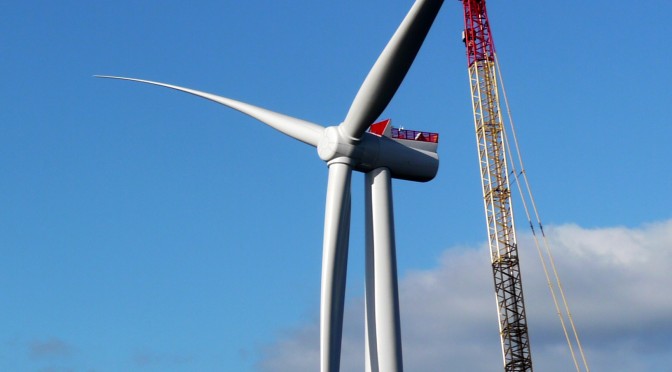GE Renewable Energy, COBOD and LafargeHolcim joinforces for the development of wind turbines with optimized 3D printed concrete bases. The three companies intend to set a new record in the construction industry as the wind turbines would reach up to 200 metres high.
The development of these turbines will be achieved as part of a multi-year collaboration whose ultimate goal is to increase renewable energy production while lowering the Levelized Cost of Energy (LCOE) and optimizing construction costs.
GE Renewable Energy harnesses the earth’s most abundant resources to provide end-to-end solutions for customers who demand reliable and affordable green power. COBOD International supplies its 3D construction printing technology to customers across the world. As for LafargeHolcim, it deliversmaterials and solutions across four main business segments: Cement, Aggregates, Ready-Mix Concrete as well as Solutions & Products.
The idea of the project is pretty simple: GE Renewable Energy brings its expertise in the design, manufacture and commercialization of wind turbines, COBOD focuses on the robotics automation and 3D printing whereas LafargeHolcim takes in charge the design of the concrete material, its processing and application.
Accelerating the access and use of renewable energy worldwide

As part of this project, the team will develop a production ready-3D Printer and appropriate materials to scale up production. A wind turbine prototype with a 10-meter high tower pedestal was successfully produced last year in Copenhagen.
It should be noted that by leveraging conventional manufacturing processes (steel or precast concrete), wind turbine towers have typically been limited to a height of under 100 meters, as the width of the base cannot exceed the 4.5-meter diameter that can be transported by road, without excessive additional costs.
Therefore, 3D printing a variable height base directly on-site will allow for the construction of taller towers. In the same vein, a 5 MW turbine at 80 meters generates, yearly, 15.1 GWh while the same turbine at 160 meters would generate 20.2 GWh, or over 33% extra power.
Over time, the team will explore new possibilities to economically develop taller towers that capture stronger winds, the final goal being to generate more renewable energy per turbine.
“Concrete 3D printing is a very promising technology for us, as its incredible design flexibility expands the realm of construction possibilities. Being both a user and promoter of clean energy, we are delighted to be putting our material and design expertise to work in this groundbreaking project, enabling cost efficient construction of tall wind turbine towers and accelerating access to renewable energy,” explained Edelio Bermejo, Head of R&D for LafargeHolcim.
Remember, you can post free of charge job opportunities in the AM Industry on 3D ADEPT Media or look for a job via our job board. Make sure to follow us on our social networks and subscribe to our weekly newsletter : Facebook, Twitter, LinkedIn & Instagram ! If you want to be featured in the next issue of our digital magazine or if you hear a story that needs to be heard, make sure to send it to contact@3dadept.com






